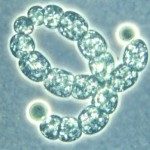Link to Pubmed [PMID] – 25773973
Appl. Microbiol. Biotechnol. 2015 Apr;99(8):3559-71
The objective of this study is to improve the viability after freeze-drying and during storage of delicate or recalcitrant strains safeguarded at biological resource centers. To achieve this objective, a joint experimental strategy was established among the different involved partner collections of the EMbaRC project ( www.embarc.eu ). Five bacterial strains considered as recalcitrant to freeze-drying were subjected to a standardized freeze-drying protocol and to seven agreed protocol variants. Viability of these strains was determined before and after freeze-drying (within 1 week, after 6 and 12 months, and after accelerated storage) for each of the protocols. Furthermore, strains were exchanged between partners to perform experiments with different freeze-dryer-dependent parameters. Of all tested variables, choice of the lyoprotectant had the biggest impact on viability after freeze-drying and during storage. For nearly all tested strains, skim milk as lyoprotectant resulted in lowest viability after freeze-drying and storage. On the other hand, best freeze-drying and storage conditions were strain and device dependent. For Aeromonas salmonicida CECT 894(T), best survival was obtained when horse serum supplemented with trehalose was used as lyoprotectant, while Aliivibrio fischeri LMG 4414(T) should be freeze-dried in skim milk supplemented with marine broth in a 1:1 ratio. Freeze-drying Campylobacter fetus CIP 53.96(T) using skim milk supplemented with trehalose as lyoprotectant resulted in best recovery. Xanthomonas fragariae DSM 3587(T) expressed high viability after freeze-drying and storage for all tested lyoprotectants and could not be considered as recalcitrant. In contrary, Flavobacterium columnare LMG 10406(T) did not survive the freeze-drying process under all tested conditions.




